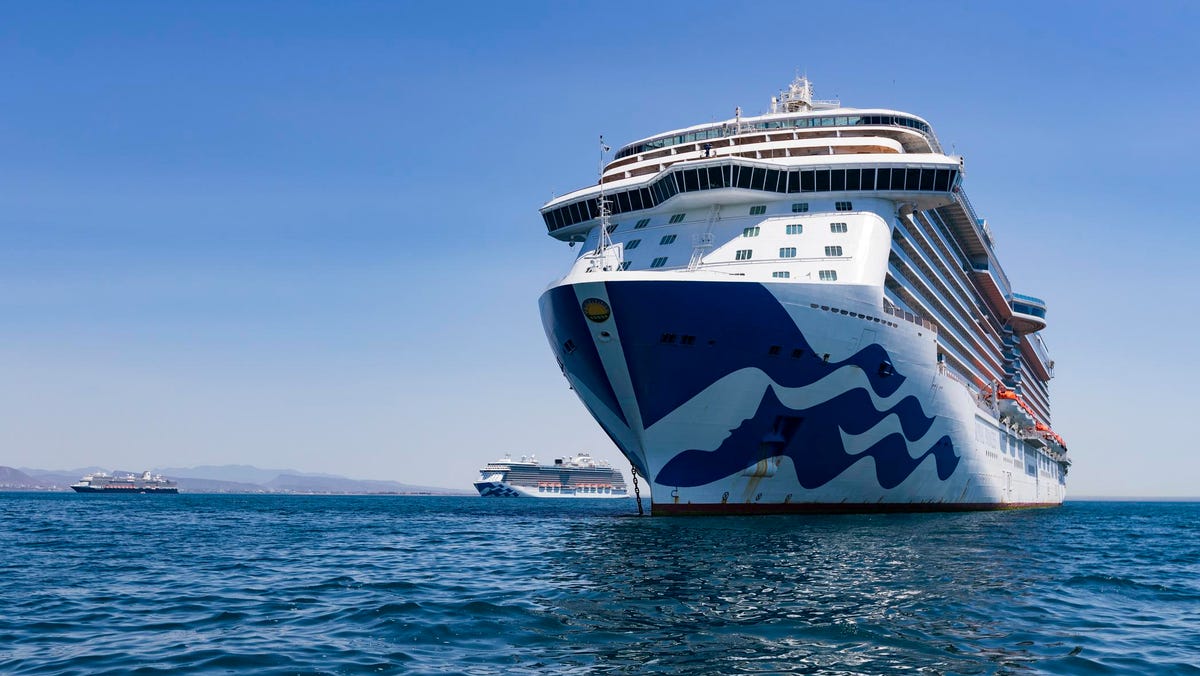
Retail on all of Princess Cruises’ ships will be handled by Harding. (Photo by Alfredo … [+]
Princess Cruises is stepping back from onboard retailing and handing over its in-house shopping operations to cruise retail specialist Harding which has hubs in Bristol in the UK, Miami and Sydney. As part of the transition, the existing Princess retail team will join the Harding business.
The two companies have struck a deal that will see the shopping on board the Princess fleet of 14 ships move under Harding’s wing, as the line—owned by the giant Carnival
In a statement, Harding said: “Never before in cruise retail has a move of such scale taken place—a clear sign of the ambition of both companies to cleverly use the restart as an opportunity to reimagine what is possible with retail at sea.” Harding president Neil Harding, added that it was “a landmark day.”
Harding approached Princess several months ago about taking over the cruise line’s onboard retail business. Natalya Leahy, the chief operations officer of Holland America Group, which includes Princess, commented that the UK-based retailer had “the proven ability to continue growing our retail proposition.”
She added that lengthy and detailed discussions have been conducted to determine “what is best for our guests, our teammates, and our brand partners.” Both companies were contacted for comment to determine whether the tie-up is a fixed-time concession contract, and how many retail staff would make the transition to Harding, but neither one had responded at the time of writing.
MORE FOR YOU
Pragmatic choice
Harding’s James Prescott describes the deal with Princess as “a true long-term partnership.”
Kelli Coleman, Princess Cruises vice president of retail said in a statement: “This feels like a new beginning.” Harding described the deal as “realizing the strategic ambitions and joint commercial thinking of both companies.” Managing director James Prescott has referred to it as “a true long-term partnership”—without putting a time frame on it.
Harding has contracts with about 20 cruise line partners spanning more than 100 cruise ships to rival Miami-based Starboard Cruise Services, part of French luxury conglomerate LVMH led by billionaire Bernard Arnault. But momentum has been very much with the British cruise retailer which recently unveiled an eclectic shopping offer on Virgin Voyages owned by another billionaire Richard Branson.
Princess Cruises decision to outsource may well be financially driven as it seeks to cut operational and overhead costs in line with its parent’s strategy. Carnival Corp—which has nine cruise brands in its portfolio—generated a huge net loss of just over $4 billion in the six months to May 2021, reined in from $5.2 billion in the same period a year before. The group has built up over $9 billion of cash and short-term investments which is “sufficient liquidity to satisfy our obligations for at least the next 12 months” it says.
Harvard Business School professor Stuart Gilson—a corporate restructuring expert—say that Carnival is an important case study in how to endure a prolonged shutdown on the scale forced on it by the pandemic. Markets are not yet convinced even though sailings have restarted; the company’s pre-pandemic stock price of more than $50 has been halved.
Still, the coming quarter should build back some revenue as more of Carnival’s vessels return to sea. In the case of Princess Cruises, by the end of November, eight ships—Majestic Princess, Grand Princess, Ruby Princess, Enchanted Princess, Sky Princess, Regal Princess, Caribbean Princess, and Emerald Princess—will be back in service, or scheduled for a restart. Their itineraries will cover Alaska, the California coast, Caribbean, Mexico and the Panama Canal.
In a regular year, Princess Cruises’ 14 ships carry about two million guests to 380 destinations around the globe. Itineraries range from three to 111 days.




